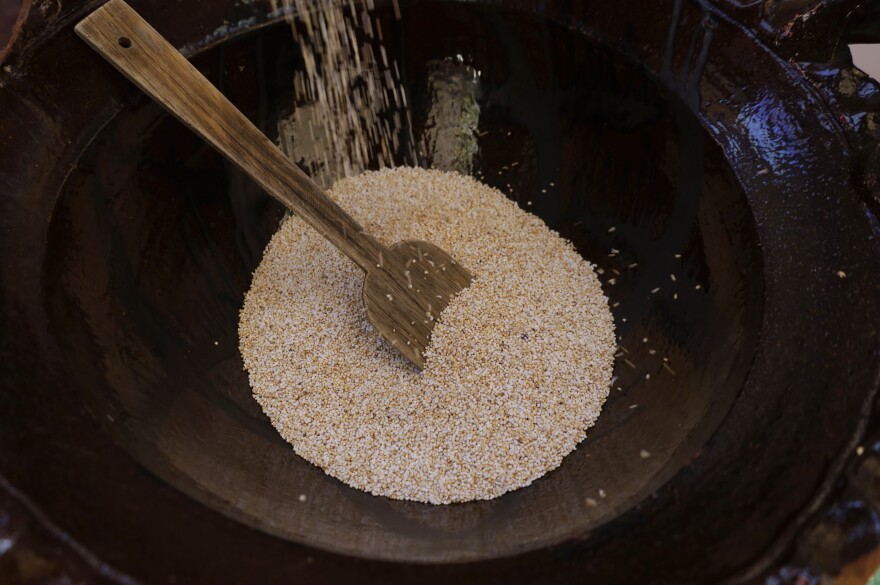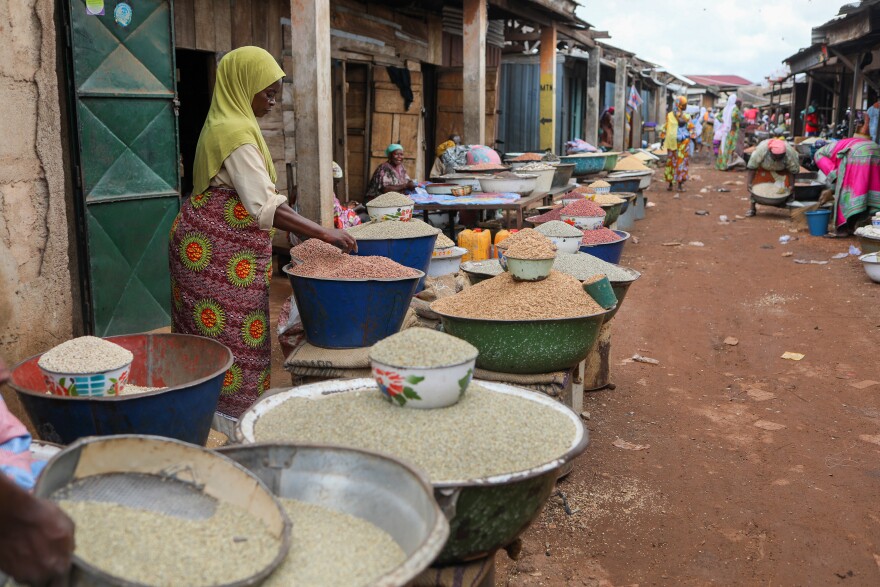Cary Fowler was enjoying a comfortable retirement at his country home in New York. The food activist, who's in his 70s, already has shelves full of prestigious awards honoring his efforts to preserve the seeds of endangered crop varieties around the globe.
But something gnawed at him. A job left undone. "There was one big project I hadn't had a chance to tackle," he says.
He's now taking on that daunting project and has recruited partners that include the U.N. and the African Union. It's a quest to revive traditional food crops and fight the unhealthy dominance of major crops like corn, wheat and rice in farmers' fields and consumers' diets. Fowler has made it the centerpiece of his new job as the U.S. State Department's special envoy for global food security.
The hardy grass pea has one potential drawback
To explain the project's goal, Fowler cites one plant in particular. It's a hardy, drought-tolerant legume called the grass pea, a native of Africa.
Some twenty years ago, Fowler was visiting scientists and farmers in Ethiopia, at a time when the country was suffering from drought. Fowler had heard of the grass pea, and asked one of his hosts if he could see a field where it was growing.
"He looked at me as if I was an idiot," Fowler recalls. "He said, 'Everything you see out there that's green, is grass pea. Everything else has died.' And he was right. We walked out into the field, and the field was cracked, it was so dry. You could put your arm down in the soil for about a foot or so. And there was this little grass pea plant, green and flowering. And I thought to myself, 'What a generous plant this is!"
Fowler acquired some grass pea seeds and brought them to his New York farm, where he's growing and eating them. "It's like a sugar snap pea," he says. It's delicious."
Yet the grass pea has some drawbacks. It doesn't produce big harvests, and the plant contains a natural toxin. If grass pea is all you eat, it'll make you sick.
Fowler thinks scientists could fix all that, breeding new varieties of the grass pea that yield more, without the toxin. But nobody's bothered to do it. The grass pea didn't seem important enough.

Meet the orphan crops
Similar stories can be told about many potential food crops, especially in Africa.
Enoch Achigan-Dako, a plant breeder in Benin, says he saw his continent's botanical riches more than a decade ago when he worked on a survey of Africa's traditional crops.
"Vegetables alone, there are more than one thousand species used by people," Achigan-Dako says. "Fruits, there are more than 450 species used."
These crops get so little attention, though, they're sometimes called orphan crops. "There were no resources associated with promoting those crops," says Achigan-Dako. A plant breeder was more likely to get funding to work on crops that are widely grown around the world, like corn or wheat.

Plant breeders succeeded in making those big crops more productive, more profitable to grow and also more plentiful and cheaper for consumers. So big crops got even bigger. They've come to dominate global diets to an astonishing degree. Scientists estimate that just six plant species – corn, wheat, rice, soybeans, potatoes, and sugarcane – account for 75% of all the calories that people get from plant-based sources. Some of those crops, notably corn and soybeans, are also fed to animals raised for their meat and milk.
The problem with popular crops
Cheaper food is a good thing. But in the case of the mega-crops, it's become too much of a good thing.
The first problem, says Purnima Menon, senior director of food and nutrition policy at the International Food Policy Research Institute, is that those big crops by themselves make for a poor diet. They deliver plenty of calories, but they lack many other nutrients that people need.
"If you look across the world, and especially if you look at poor countries, what's on people's plates isn't getting us anywhere close to the diverse diets that we want to see," she says.

Problem number two: "Some of these crops are in trouble with climate change," says Allen Van Deynze, a plant breeder at the University of California, Davis. Scientific studies are showing, for instance, that it's already getting harder to grow corn in the tropics due to warming trends. Relying on just a few crops is like putting a lot of very valuable eggs in one basket.
The new campaign that Fowler is promoting, called Vision for Adapted Crops and Soils (VACS), has identified about twenty "opportunity crops" that are familiar sources of nutritious food in Africa or Asia and also are well-adapted to a warmer climate. They include African eggplant, pearl millet, the lablab bean, a grain called fonio, amaranth and the grass pea.
The initiative will support plant breeders like Enoch Achigan-Dako, in Benin, helping them develop new, productive varieties that farmers will find attractive to grow, ultimately making them more available and affordable for consumers. "Most of these crops have never had a single scientifically trained plant breeder working on them. So how could we hope to realize their potential?" says Fowler.

Some scientists have been preaching this message for years. Van Deynze, for example, helped found an African Orphan Crops Consortium that includes plant breeders in Africa. VACS is now delivering a huge boost to those efforts. "We're very, very excited to be part of this, because it's on a much bigger scale," Van Deynze says.
Nutrition expert Purnima Menon, who lives in India, says making real progress will likely take a very long time. "It's not a simple and straightforward pathway from what's grown [in fields] to what ends up on people's plates," she says. "That pathway is very long."
Many things prevent people from filling their plates with the diverse foods they need, she says. Affordability is a constant obstacle. And public efforts to promote better nutrition compete with marketing campaigns by the food industry, which has much more money to spend.
This effort to revive traditional crops is "very ambitious," she says. "It'll be fascinating to see how it unfolds."
Dan Charles is a freelance writer in Washington, D.C. He was formerly NPR's food and agriculture correspondent.
Copyright 2024 NPR. To see more, visit https://www.npr.org.



